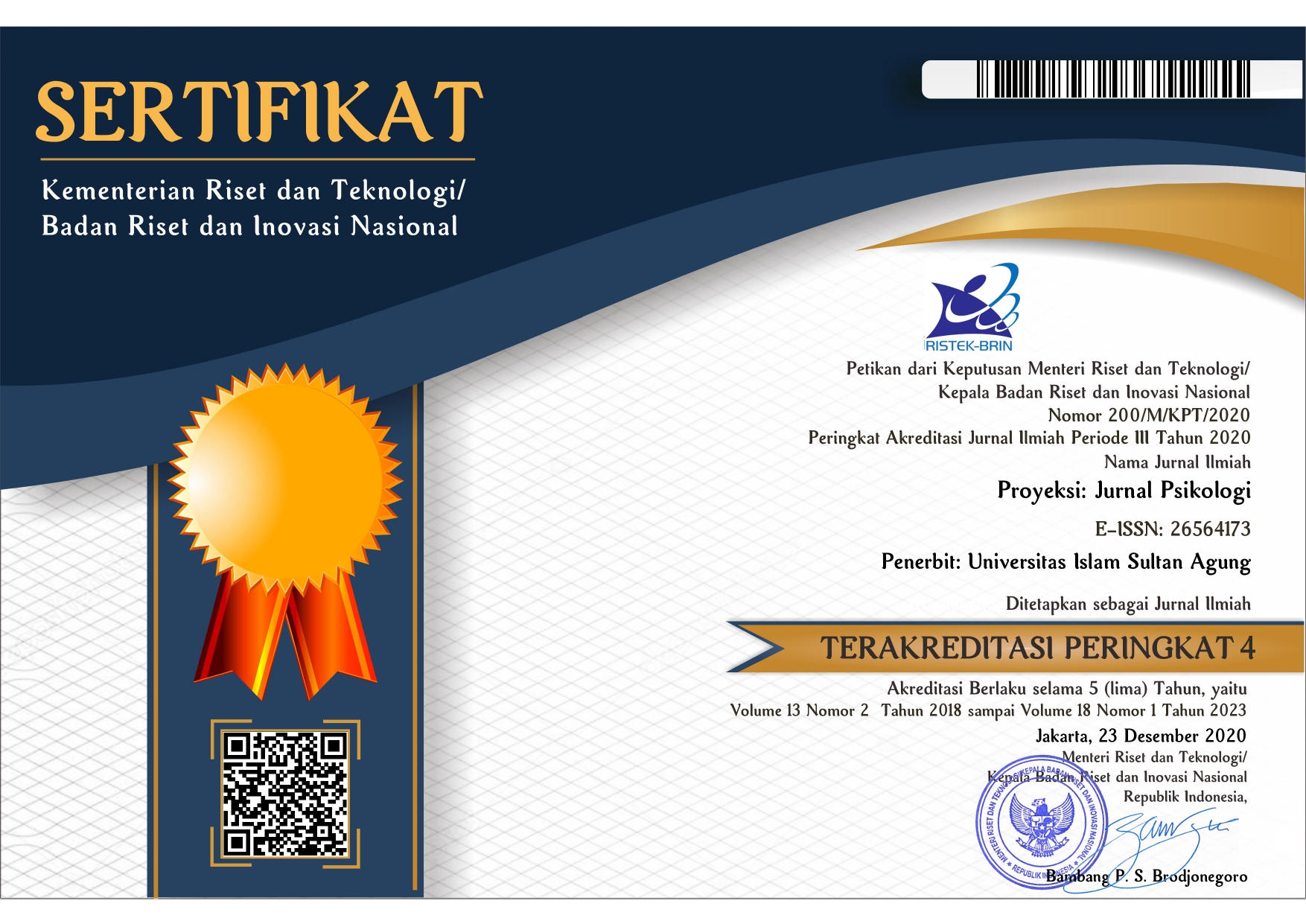INTERVENSI PELATIHAN PENGENALAN DIRI UNTUK MENINGKATKAN SELF ESTEEM PADA REMAJA PENDERITA THALASSAEMIA
Abstract
The purpose of this study is to provide new insights self-esteem for participants, and to find outcome increasing participant’s self-esteem after participating in the training. This experimental study was conducted for 6 teenagers with thalassemia who were selected based on the specific characteristics proposed. This study used a pure experimental design without control group. Data were collected through interviews and observations before and before treatment. The intervention provided was in the form of personal recognition training. This treatment uses lecture, discussion, brainstorming, and games with light methods. Lasts for 2 times with a duration of 2.5 hours. In general, almost all people who experience development and able to be creative during the material session, and allow participants to have and be able to be more confident. There was a change in the classification of participants, namely DA, DE, L, S, and W. Meanwhile, there was no change in Lu.
Keywords
Full Text:
PDFReferences
Adiyanti, M., G., & Aunillah, F. (2015). Program pengembangan keterampilan resiliensi untuk meningkatkan self-esteem pada remaja. Gadjah Mada Journal Of Professional Psychology, 1,1 , 48 – 63
Aisyahi, I., Kelana, D.S. (2021). Penyuluhan kesehatan tentang penyakit thalassaemia. Bina Sehat Masyarakat, V1(1) : 24-30
Amalia, L. (2014). Meningkatkan self-esteem mahasiswa stain ponorogo dengan pelatihan pengenalan diri, Kodivikasia, 8, 1
Batubara, J, RL. (2010). Adolecent development (perkembangan remaja).Seri Pediatri, 12,1
Dahlui, M., Hishamsah, M.I., Rahman, A., & Aljunid, S. M. (2009).Quality of life in transfusion dependent thalassemia patients on desferrioxamine treatment. Singapore med j, 50 (8) : 794-799
Handayani, M., M., Ratnawati, F., & Hemy, A., R. (1998). Efektifitas pelatihan pengenalan diri terhadap peningkatan penerimaan diri dan harga diri. Jurnal psikologi, 2, 47-55
Hanifah, F., N. (2015). Kecemasan pada orang tua dengan anak thalassaemia . Laporan PKPP Bidang Klinis. Universitas Muhammadiyah Surakarta (tidak diterbitkan)
Herdiansyah, H. (2010) Metodologi penelitian kualitatif untuk ilmu-ilmu social.Jakara : Salemba Humanika
Kurnia, F., F. (2020). Gambaran Perilaku Orang Tua Terhadap Pemberian Nutrisi Anak Thalasseamia di RSUD DR.Moewardi Surakarta. Skripsi. (Tidak Diterbitkan).Yogyakarta: Universitas Muhamadiyah Surakarta
Mulyani, L., Rahayu, Y., & Gunawan, A. (2019). Family Support Relationships With Self Esteem Of Adolescents Of Thalassemia In Polyclinic Thalassemia Rsud Ciamis Year 2018, V6(2) : 29-39
Isworo, A., Setiowati, D., Khoiriyah, Alfi R. (2014). Dukungan Keluarga Yang Diperlukan Pasien Thalassaemia. Bandung: Jurnal Ilmu Keperawatan. Vol. 2, No. 1.
Santrock, J., W, (1995). Life span development. Jakarta : Erlangga
Tim DIklat. (2014). Buku saku joint commision international accreditation (JCIA) RSUD DR Moewardi. Surakarta : RSUD DR Moewardi
http://p2ptm.kemkes.go.id/kegiatan-p2ptm/pusat-/hari-talasemia-sedunia-2019-putuskan-mata-rantai-talasemia-mayor (diakses 31-12-2021)
https://www.idai.or.id/artikel/seputar-kesehatan-anak/mengenal-Thalassaemia (diakses31-12-2021)
DOI: http://dx.doi.org/10.30659/jp.17.2.13-24
Refbacks
- There are currently no refbacks.

Proyeksi by http://jurnal.unissula.ac.id/index.php/proyeksi/ is licensed under a Creative Commons Attribution-ShareAlike 4.0 International License.

